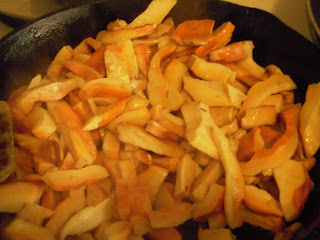 |
| Basil fresh from Glo's Garden. Thanks, Michael! |
Making herbal extracts with alcohol is one of the easiest things in the world to do, if you are 1) old enough to buy alcohol, 2) have a few jars and 3) have some plant materials you'd like to suck some of the goodness out of.
 |
| There was the cutest little snail on the basil. |
Wash and towel dry your fresh basil, preferably organic.
Fill a ball jar (or your chosen receptacle) with the basil, lightly and loosely packed.
Pour your vodka of choice to cover all the plant material, mixing a bit to release any trapped air bubbles.
Cap and allow to infuse 24-48 hours.
Strain and store in airtight container.
I used a relatively cheap vodka, that didn't taste great straight, knowing that the wonderful infusion of basil would cut the burn and turn it into a lovely, palatable, affordable beverage--and it did! After 24 hours the vodka smelled and tasted delightful.
We made basil vodka ginger lime spritzers, and they made us feel great! The aromatic smell and taste of the basil, the bit of spice from the ginger syrup (Terra Firma's is a delicious choice) combined with the tart lime (lemon works too) and the faint sparkle of carbonation is truly uplifting--a medicinal treat worthy of repetition! It was therapeutic!




















